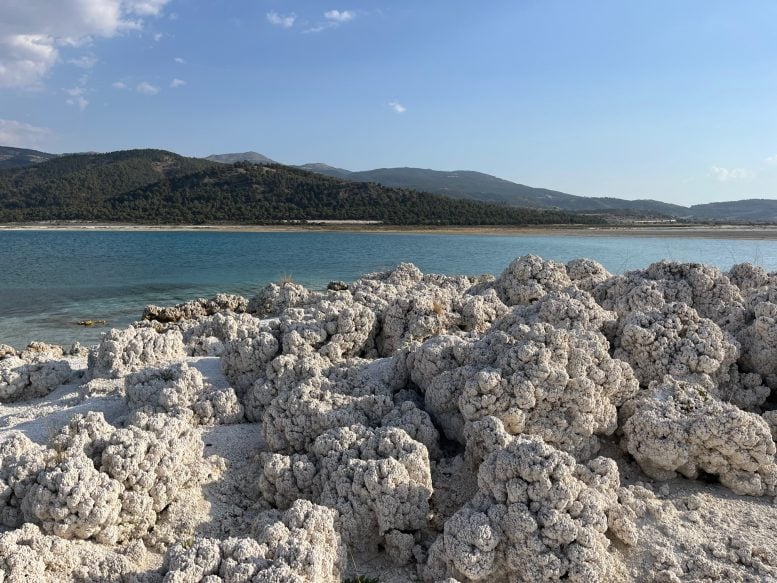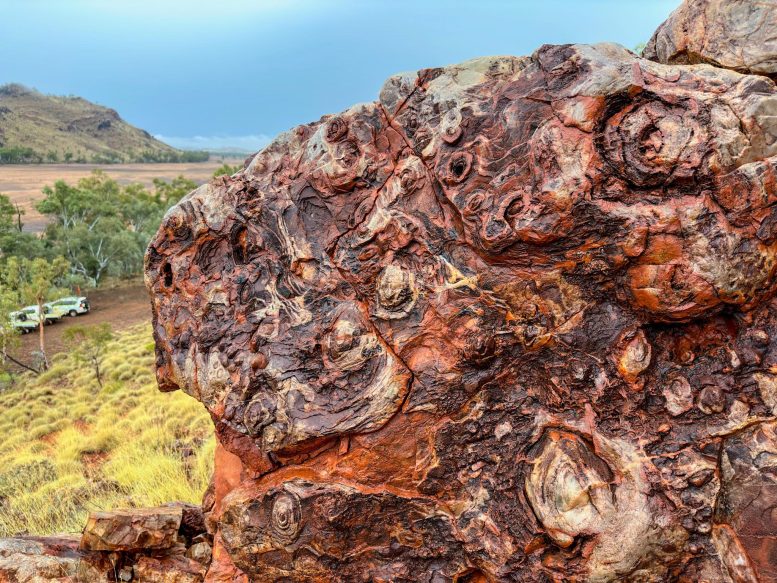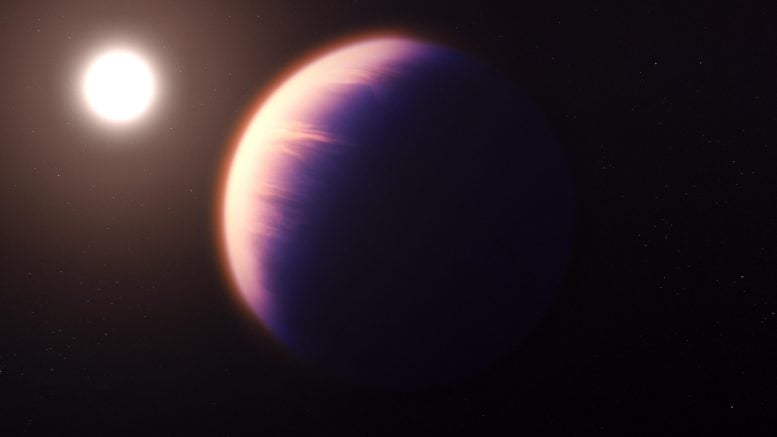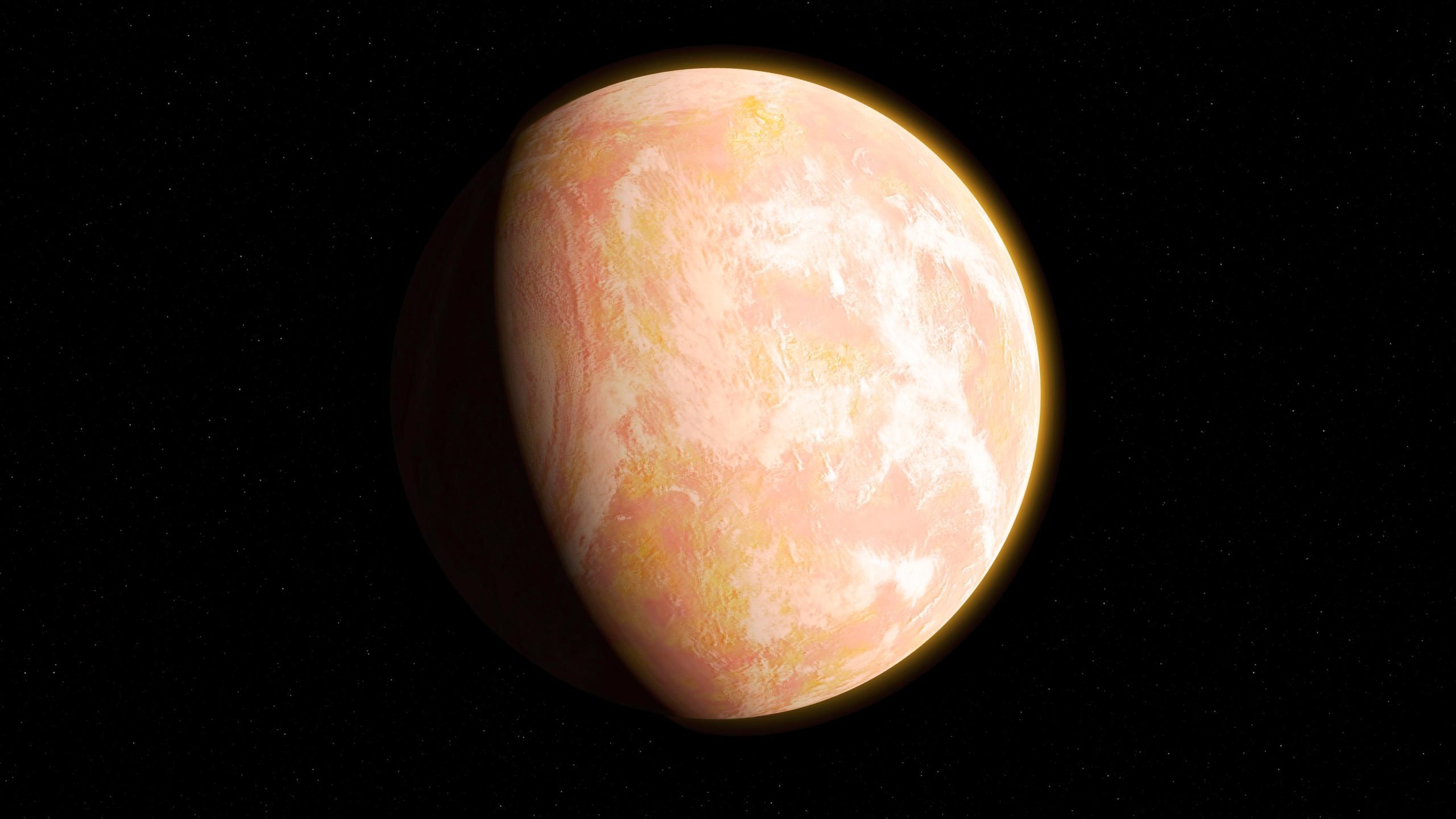An artist’s rendition of the hazy atmosphere of the Archaean Earth – a pale orange blob. Credit: NASA Goddard Space Flight Center/Francis Reddy
Scientists examine the far-reaching impact of microorganisms on Earth’s history, tracing their influence through isotopic and genetic evidence.
The study highlights the link between microbial activity and major environmental changes, such as oxygen levels, which are essential to understanding Earth’s evolution and assessing extraterrestrial habitability.
NASA– Supported scientists have examined the long and complicated history of microbial life and the Earth’s environment. Reviewing the current state of knowledge in fields such as microbiology, molecular biology and geology, the study looks at how microorganisms are shaped and shaped by the chemical properties of our planet’s oceans, land and atmosphere. The study combines data from multiple fields of study and discusses how information on the complex history of life on our planet from a single field cannot be viewed in isolation.
Understanding microbial fossils
The first life on Earth was microbial. Today, the vast majority of our planet’s biomass is still composed of tiny single-celled microorganisms. Although they are abundant, the history of microbes can be a challenge for astrobiologists to study. Microbes do not leave bones, shells, or other large fossils like dinosaurs, fish, or other large organisms. Because of this, scientists must look at different evidence to understand the evolution of microbial life over time.

The rocks along the shoreline of Lake Salda in Turkey were formed over time by microbes trapping minerals in the water. These microbes were once a major form of life on Earth. Credit: NASA/JPL-Caltech
To study ancient microbes on Earth, astrobiologists look for isotopic fingerprints in rocks that can be used to identify the metabolism of ancient communities. Metabolism refers to the conversion of food into energy and occurs in all living things. Many elements (think carbon (C), nitrogen (N), sulfur (S), iron (Fe)) are involved in microbial metabolism. As microbes process these elements, they cause isotopic changes that scientists can detect in the rock record. Microbes also help control how these elements are deposited and cycled in the environment, influencing geology and chemistry at both local and global scales (consider the role of microbes in the carbon cycle on Earth today).
Genetic and geological insights
Another way to study ancient microbial life is to look back at the evolutionary information contained in the genetics of life today. Combining this genetic information from molecular biology with geobiological information from the rock record can help astrobiologists understand the connections between the co-evolution of the early Earth and early life.
For an example of geological evidence of microbial metabolism, we can consider the formation of banded iron formations (BIF) on the ancient sea floor. These colorful layers of alternating iron- and silicon-rich sediments were formed between 3.8 billion and 1.8 billion years ago and are associated with some of the oldest rock formations on Earth. The red colors they display are from their high iron content, telling us that Earth’s oceans were rich in iron during the 2 billion years in which these rocks were forming.

Many microbial structures on the shores of Lake Salda in Turkey are exposed as water levels drop, allowing scientists to study the relationship between life and the surrounding environment. Credit: Tim Lyons/UCR
In the new study, the research team provides an overview of current knowledge, gathering information on the early metabolism used by microbial life, the time when these metabolisms evolved and how these processes are linked to major chemical and physical changes on Earth. . such as oxygenation of the oceans and atmosphere.
Evolution and effects of oxygenation
Over time, the prevalence of oxygen on Earth has changed dramatically, in the ocean, atmosphere, and land. These changes affected both the evolution of the biosphere and the environment. For example, as the activity of photosynthetic organisms increased oxygen levels in the atmosphere, creating new environments for microbial life to inhabit. Various nutrients were made available to life to promote growth. At the same time, microbes that could not survive in the presence of oxygen had to adapt, die out, or find a way to survive in environments where oxygen did not exist, such as deep into the Earth’s subsurface.

Photograph of a fossilized stromatolite in Australia. These ancient structures resulted from the activity of microorganisms living in layered, mat-like colonies. Credit: NASA/Mike Toillion
The new study expands our understanding of how oxygen levels have changed over time and spatial scales. The authors map different types of microbial metabolism, such as photosynthesis, for this story to better understand the “cause-and-effect relationship” between oxygen and the evolution of life on Earth. The paper provides important context for major changes in the course of evolution for the biosphere and the planet.
Biogeochemical cycles and evolutionary influences
By carefully examining the history of different types of microbial metabolism on Earth, the review paper shows how biogeochemical cycles on our planet are inextricably linked over time at local and global scales. The authors also discuss important gaps in our knowledge that limit interpretations. For example, we do not know how large the young biosphere was on Earth, which limits our ability to estimate the global effects of different metabolisms during Earth’s earliest years.
Similarly, when using genetic information to look back along the tree of life, scientists can estimate when certain genes first appeared (and thus what types of metabolism might have been used at that time in living cells). However, the evolution of a new type of metabolism at one point in history does not necessarily mean that that metabolism was common or had a large enough effect on the environment to leave evidence in the rock record.

This is an illustration of the exoplanet WASP-39 b, also known as Bocaprins. NASA’s James Webb Space Telescope provided the most detailed analysis of an exoplanet’s atmosphere ever with the WASP-39 b analysis released in November 2022. The Webb Near-Infrared Spectrograph (NIRSpec) showed unambiguous evidence for carbon dioxide in the atmosphere, while previous observations by NASA’s Hubble and Spitzer space telescopes, as well as other telescopes, indicate the presence of water vapor, sodium and potassium. The planet probably has clouds and some form of weather, but it may not have atmospheric belts like those of Jupiter and Saturn. This illustration is based on indirect observations of the transit by Webb, as well as other space and ground-based telescopes. Webb has not captured a direct image of this planet. Credit: NASA, ESA, CSA, Joseph Olmsted (STScI)
Conclusions and implications for extraterrestrial life
According to the authors, “The history of microbial life marched in step with the history of the oceans, land, and atmosphere, and our understanding remains limited by what we still know about the environments of the early Earth.”
The study also has wider implications in the search for life beyond Earth. Understanding the co-evolution of life and the environment can help scientists better understand the conditions necessary for a planet to be habitable. The connections between life and environment also provide important clues in the search for bio-signature gases in the atmospheres of planets orbiting distant stars.
For more about this research, see New insights into Earth’s first organisms that could change the way we search for extraterrestrial life.
Reference: “Co-evolution of early Earth environments and microbial life” by Timothy W. Lyons, Christopher J. Tino, Gregory P. Fournier, Rika E. Anderson, William D. Leavitt, Kurt O. Konhauser, and Eva E. Stüeken, 29 May 2024, Nature Reviews Microbiology.
DOI: 10.1038/s41579-024-01044-y
